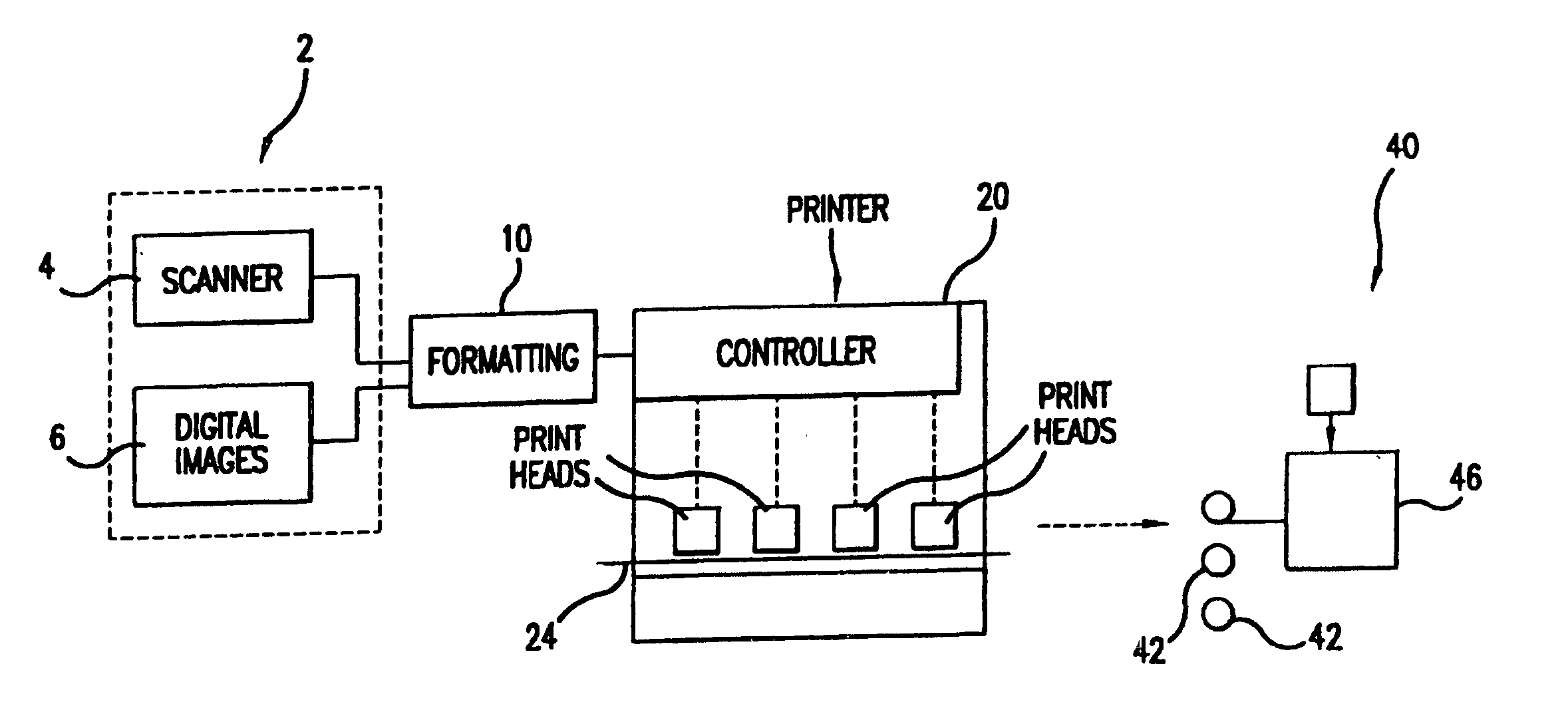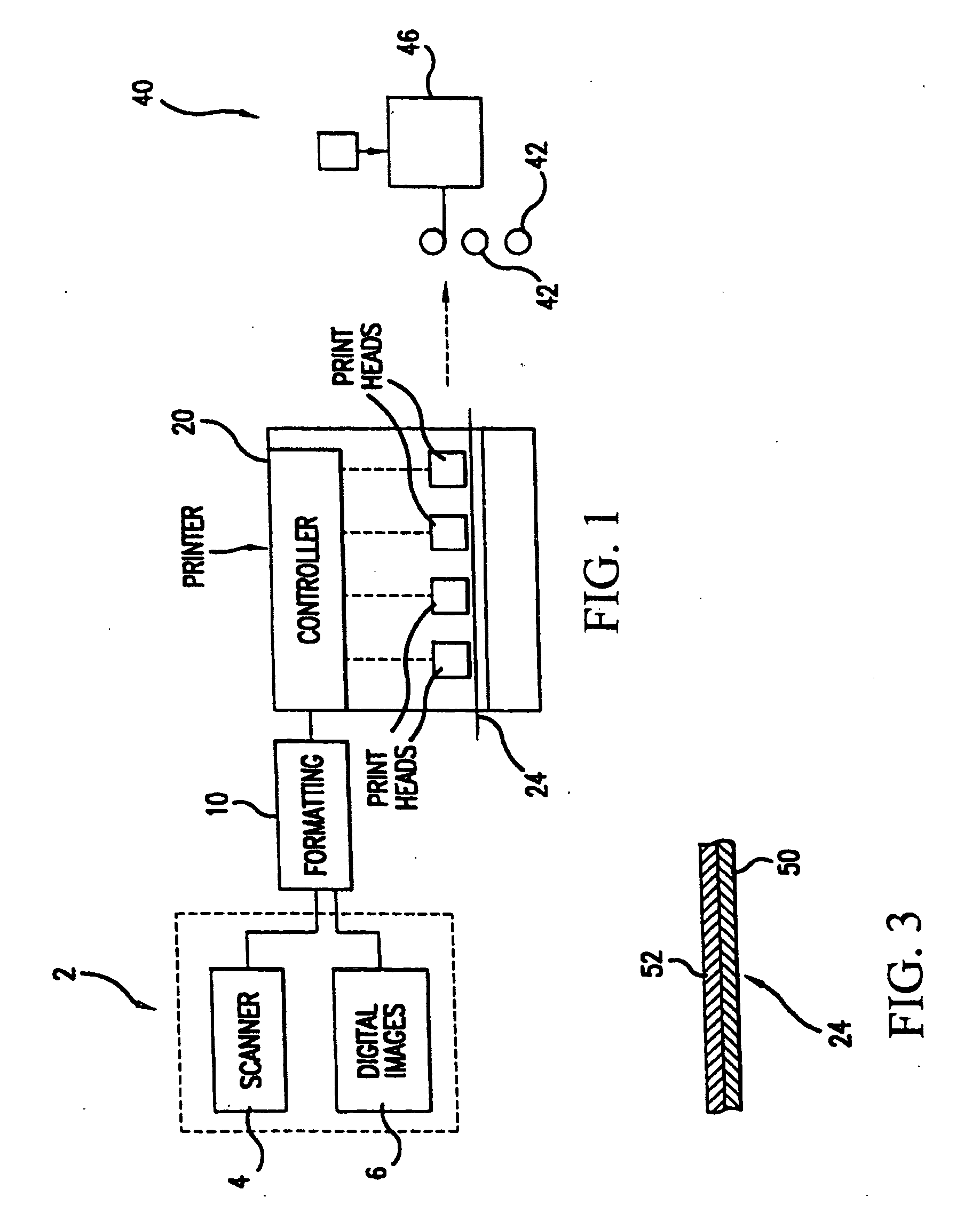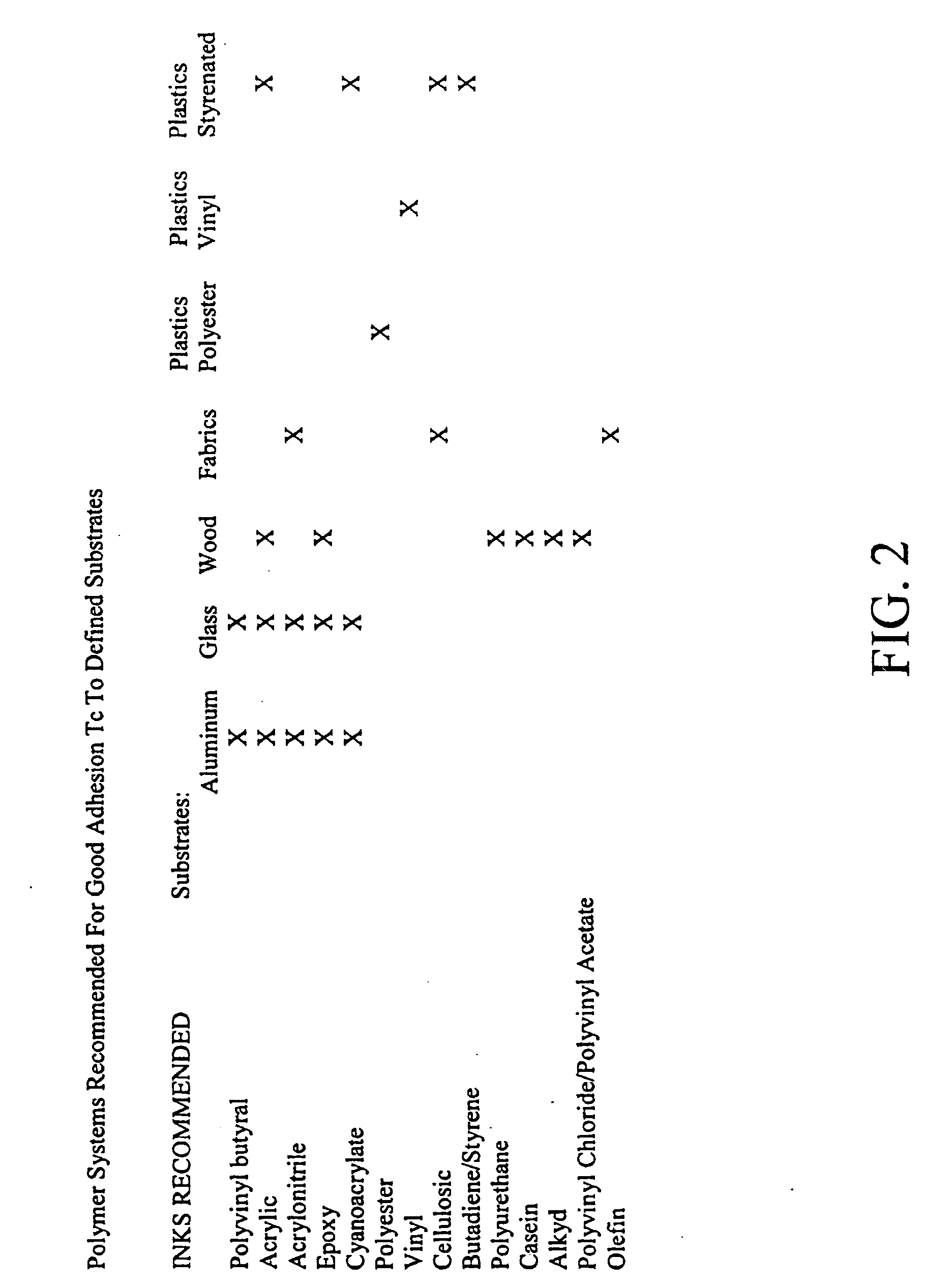Insert molded print product on demand
a technology of inserting molded print and printing product, which is applied in the direction of printing, typewriters, coatings, etc., can solve the problems of high set-up costs associated with the creation of each image, inability to produce fewer than 20,000 copies of the same ink image, and economic infeasibility of using such a process to achieve the effect of facilitating the removal of film
- Summary
- Abstract
- Description
- Claims
- Application Information
AI Technical Summary
Benefits of technology
Problems solved by technology
Method used
Image
Examples
Embodiment Construction
[0022] The present invention utilizes digital image processing technology and digitally controlled color printing technology, in a novel combination and configuration with a high speed molding process, to make possible the printing of any desired combination of color images onto molded objects. The process has particular ability to produce objects, including those that are generally flat, with designs or color images formed on one surface. In some embodiments, the related surface is protected from scratching, marring, and the like.
[0023] Generally, the print medium is placed into one or a series of molds, after which, molding composition is added and a molded object formed. The image is transferred from the print medium to the molded object during the molding process. Additional heaters or pressure rollers are not required to facilitate the transfer, because the heat from the molding process may suffice. The molding compensation, such as for example, molten plastic, can bond the in...
PUM
| Property | Measurement | Unit |
|---|---|---|
| Fraction | aaaaa | aaaaa |
| Fraction | aaaaa | aaaaa |
| Fraction | aaaaa | aaaaa |
Abstract
Description
Claims
Application Information
 Login to View More
Login to View More - R&D
- Intellectual Property
- Life Sciences
- Materials
- Tech Scout
- Unparalleled Data Quality
- Higher Quality Content
- 60% Fewer Hallucinations
Browse by: Latest US Patents, China's latest patents, Technical Efficacy Thesaurus, Application Domain, Technology Topic, Popular Technical Reports.
© 2025 PatSnap. All rights reserved.Legal|Privacy policy|Modern Slavery Act Transparency Statement|Sitemap|About US| Contact US: help@patsnap.com



